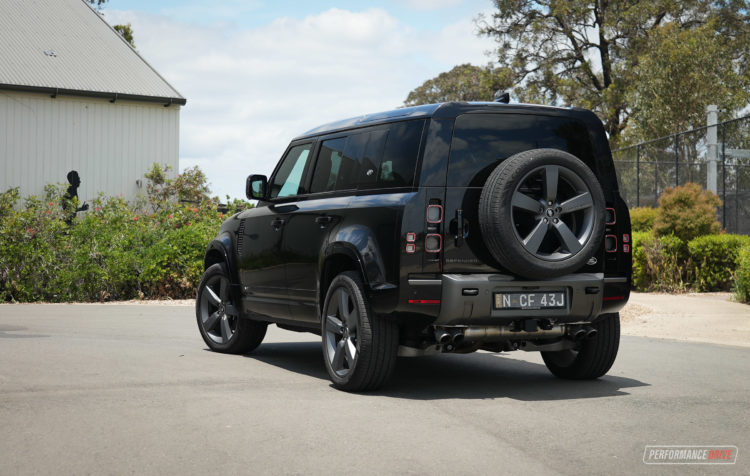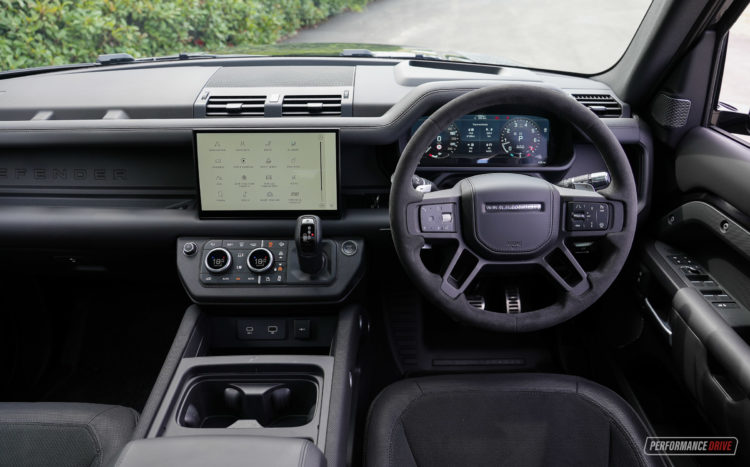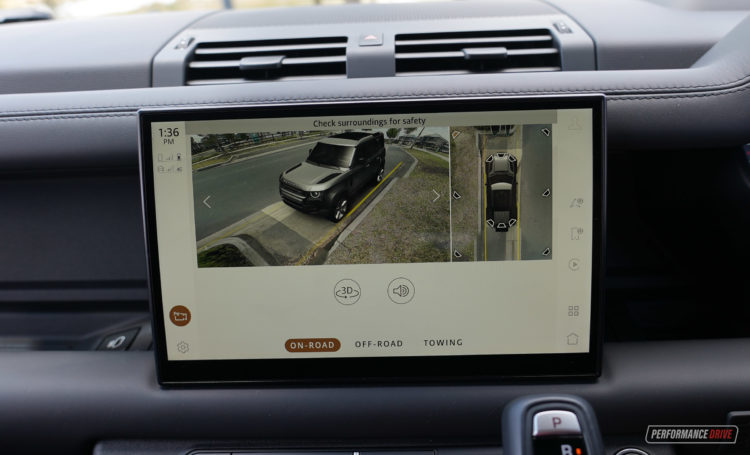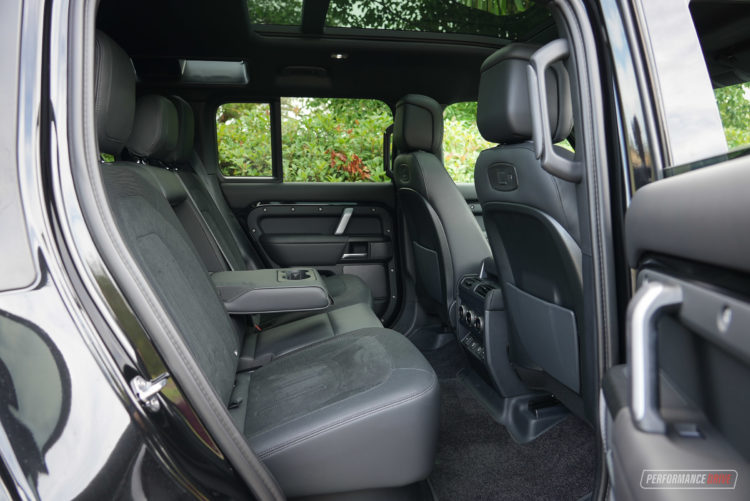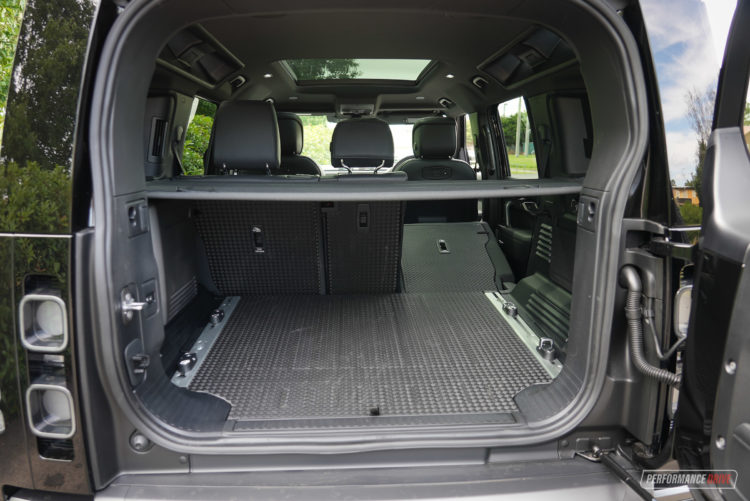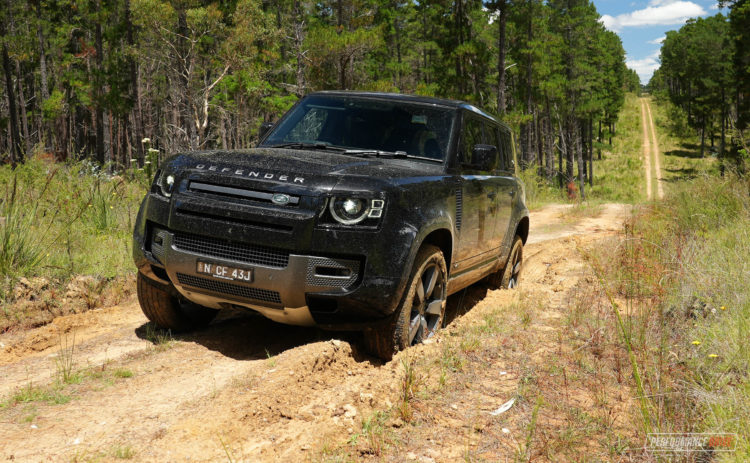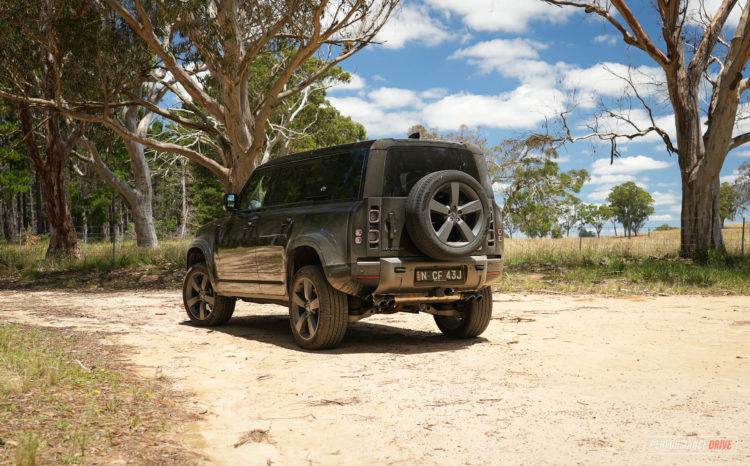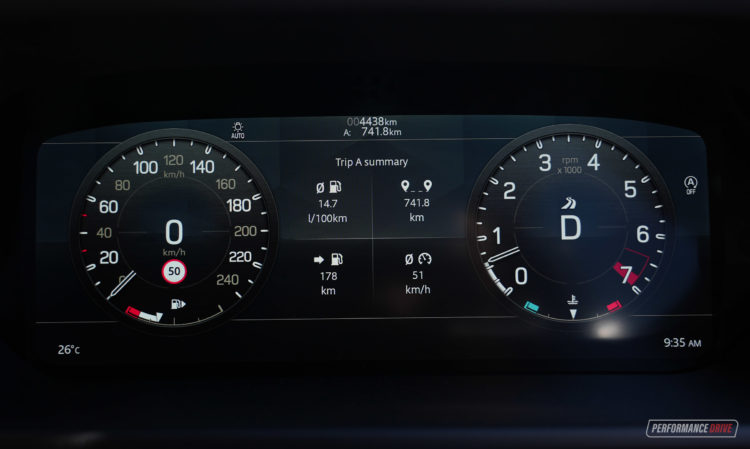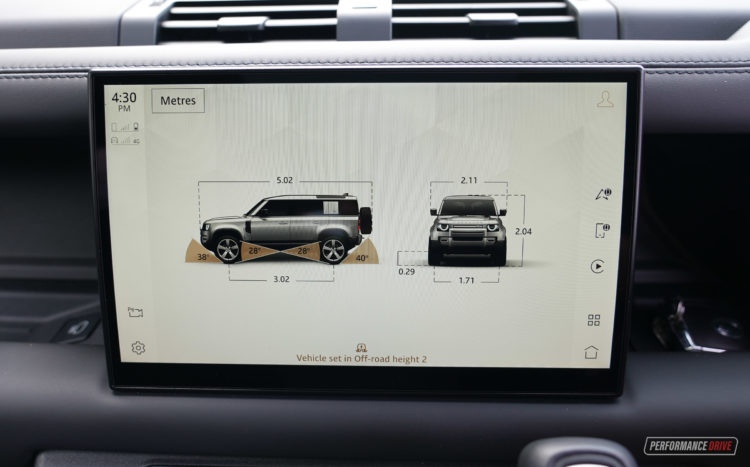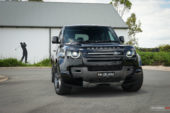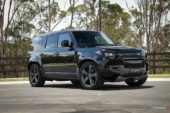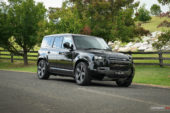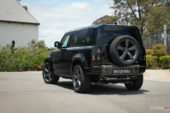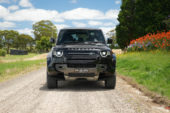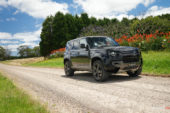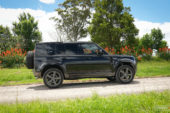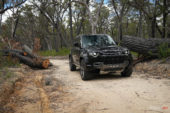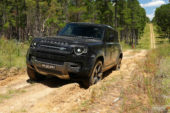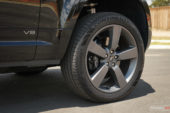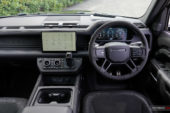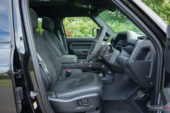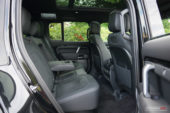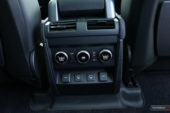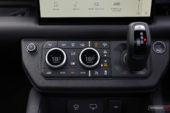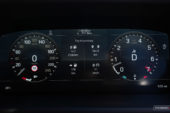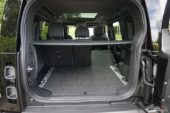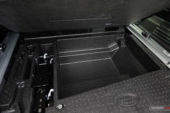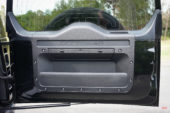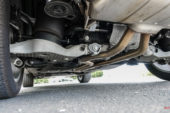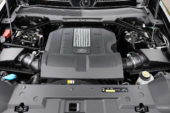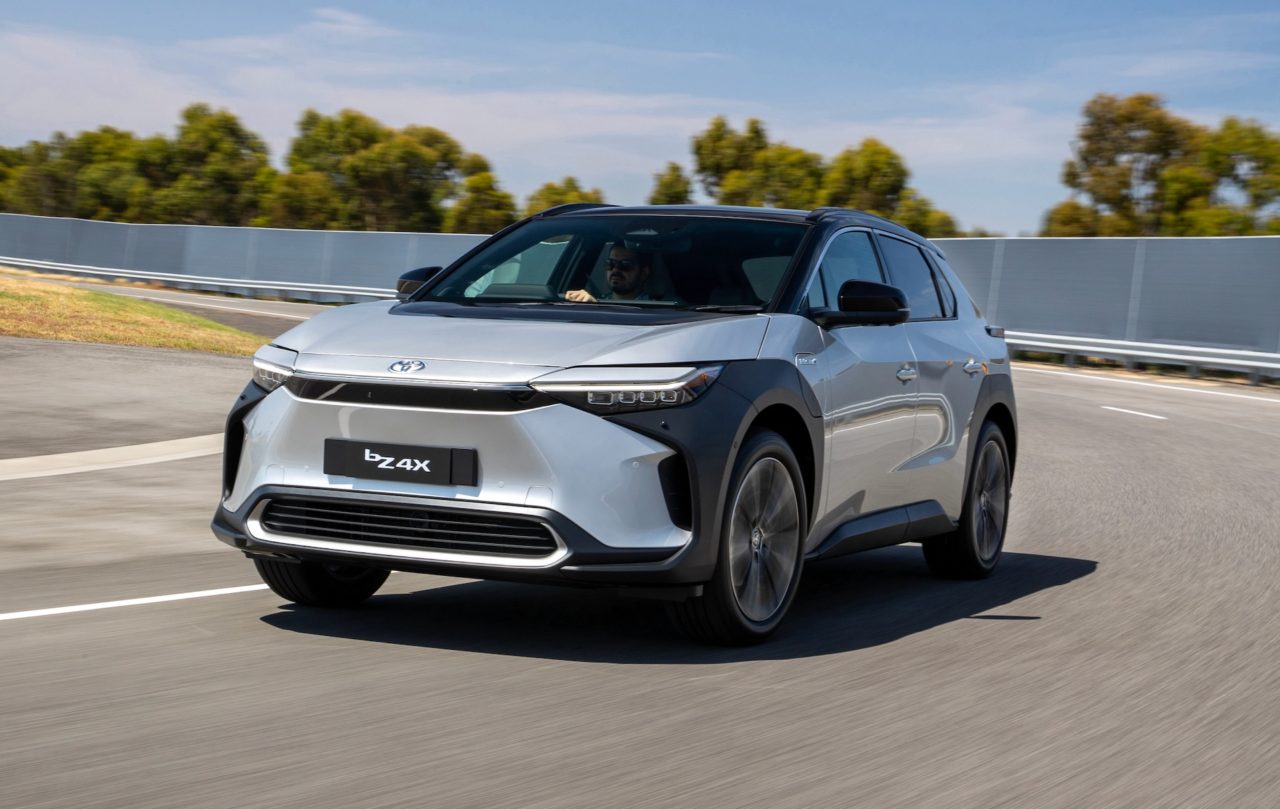Do you have a supercharged V8 vehicle? You might want to hold onto it. According to Redbook, there are currently 1817 new vehicles on the market in Australia right now. Of those, just 3 feature a supercharged V8. And 2 of those are the Land Rover Defender P525. Talk about exclusivity.
Land Rover offers the P525 V8 in both the 90 (short wheelbase) and 110 (regular wheelbase) versions of the latest Defender. The other vehicle, if you’re wondering, is the RAM 1500 TRX. Obviously this kind of rarity doesn’t come cheap. So don’t pull your hair out when you see the starting price for the Defender 90 P525 at $221,300, and for the 110 V8 you’re looking at $226,500 (excluding on-road costs).
It is worth knowing these are the flagship models, packed with pretty much everything that’s available to the latest Defender series. You’re not just paying for the V8 power, in other words. You’re getting full luxury, technology, and functionality.
2023 Land Rover Defender 110 P525 – THE SPECS
[column width=”47%” padding=”6%”]Engine: 5.0-litre supercharged V8
Output: 386kW@6500rpm / 625Nm@2500-5500rpm
Transmission: Eight-speed auto
Drive type: Four-wheel drive
Wheels: F & R: 22×9.0, 275/45
ANCAP: Not tested
Tare weight: 2543kg
Power-to-weight: 6.58:1 (kg:kW)
Official fuel economy: 12.7L/100km
Economy during test: 14.7L/100km
Fuel capacity/Type: 90L/95 RON[/column] [column width=”47%” padding=”0″]Power efficiency: 30.39kW:L/100km
0-60km/h: 2.65 seconds*
0-100km/h: 5.25 seconds*
60-110km/h: 3.46 seconds*
1/4 mile: 13.42 seconds at 171.4km/h*
Max acceleration: 0.889g*
100-0km/h braking: 3.41 seconds at 42.17 metres*
Max deceleration: -1.161g*
Decibel at idle: 47*
Peak decibel at 60-100km/h: 89*
Priced from: $226,500[/column][end_columns]
* Figures as tested by PerformanceDrive on the day. Factory claims may be different
2023 Land Rover Defender 110 P525 – THE PACKAGE
We like to think of this as Land Rover’s answer to the Mercedes-AMG G 63. Its chiselled and rugged external design is both modern and utilitarian, perhaps more so than the Mercedes. In both ways, because various elements are quite intricate and detailed, such as the taillights and recessed headlights, but then at the back is an old-fashioned spare wheel mounted on a side-hinged tailgate. We don’t mean that in a negative way. It’s great to have a blend of modernity for the design and then functional pieces that actually help with day-to-day living.
We particularly like the subtle gunmetal grey badges and the intricate taillights. Though, the overall attention to detail is superb. More gunmetal grey is used for the massive 22-inch alloy wheels which come standard on the V8, featuring fine Defender engraving on one of the spokes. It’s a nice touch.
The Defender’s interior layout and design is a real winner. One of our favourites at the moment. Again, it balances up-to-the-minute styling with pure practicality and real-world rationale. You’ve got more shelving than an IKEA store, with pockets and cubby holes everywhere, including a multi-level centre console and full-width dash shelf. USB and other charging ports are scattered around the place too, including on the passenger side shelf. It is such a handy living space.
And then up on the dash is JLR’s latest Pivi Pro touch-screen, incorporating sharp graphics and quick loading times. There’s also a bunch of off-road menus you can dive into, including an awesome outside-view camera system that allows you to select various areas to focus on, as well as a handy external dimensions display that updates the figures depending on what driving mode you’re in, and what suspension level is set.
Like most variants of the new Defender range, the V8 model comes with height-adjustable air suspension as standard, allowing you to raise the ground clearance right up to 290mm. You can also lower it down during on-road touring, to 220mm in normal mode, or even lower at ‘access height’ level (170mm).
Passenger comfort in the front is good, but we’d like a bit more side support from these mildly sporty seats. They’re wrapped in Ebony Windsor leather with Miko suedecloth and Robustec accents which provide some grip and breathability. You obviously have a commanding view out and around you, with tall windows further cementing that. You also sit quite high up on the seat even at its lowest position, with the window sill almost near your elbow, perhaps following tradition.
Rear passengers are greeted with climate control and separate ventilation, as well as a heap of charging ports of various format. The floor is all plastic, only with carpet mats that lock into place. It’s great, because you can go as deep as you like into the mud and dirt and not have to worry about destroying any permanent carpet. With the plastic floor it cleans with an easy wipe. Legroom and headroom is not going to be an issue for most people.
It’s a similar story in the boot, with a durable plastic lining on the floor so you can stack it up with all kinds of camping gear or outdoor equipment. This is a huge space, too, opening up from 972L to 2277 litres with the rear seats folded. And yes, there is another power socket in the boot area (a household outlet). If that’s not enough, there’s a big water-proof tub under the boot floor, and a solid pocket along the swinging tailgate. There’s also a centre fridge/cooler box under the front console. Basically, this thing is built to travel and explore.
2023 Land Rover Defender 110 P525 – THE DRIVE
Under the bonnet is JLR’s now outdated 5.0-litre supercharged V8 – new V8 models from the company have switched to a BMW-based twin-turbo unit. But that’s fine by us as this mighty motor offers instant response, and a deep, gargling soundtrack. It always feels very powerful and imposing, even when you’re just cruising the town. But then it belts out a monstrous roar when you put your foot down.
The air suspension system provides a soothing, absorbent ride. There is a bit of body-roll around corners though, as you might expect, and it feels like a heavy beast when pushed. That’s because it weighs 2543kg – a compromise you have to make for this level of versatility. It not only performs wonderfully as an urban cruiser, it is brilliant at grand touring on the highway, and of course exceptional when it comes to off-roading.
We can’t explain how much fun we had in this machine off road during testing. And with this engine. It feels like you can power your way out of any boggy situation, but thanks to the clever off-road driving modes, you rarely feel worried about getting stuck – we didn’t come close. With the height set at its maximum 290mm (off-road height 2), it climbs over pretty much anything. And you have low range and a locking differential to utilise if things get really serious.
With those whopping 22-inch alloy wheels wearing fat 275/45 tyres front and rear, traction is rarely an issue on or off the road. However, being quite low-profile for an SUV, and very low for an off-roader, these are the weakest link when it comes to sheer terrain-conquering capability. If you’re very serious about off-roading Land Rover does offer special all-season tyres (no cost) and smaller 20-inch alloy wheels as an option if you prefer. We’d recommend them if you are planning a lot of adventurous trips.
Fuel consumption is clearly never going to be as low as the other petrol and diesel options, but with an official average of 12.7L/100km, it’s not too bad. Let us explain. This engine produces 386kW (and 625Nm). In order to achieve power you need energy. And that energy is fuel. So the best way to look at it, in our opinion, is to figure out its ‘power-efficiency’ ratio. As in, is the consumption reasonable relative to the output the motor generates.
We like to calculate this by dividing the power by the official average (the official average consumption is pretty much standardised for all new vehicles). For this V8 Defender the ratio ends up being 30.39kW:L/100km. Have a play around with this formula with other vehicles and you’ll soon discover anything over 25-30 is excellent.
For example, the current Toyota Corolla hybrid produces 103kW and uses an official average of 4.0L/100km, resulting in a power-efficiency ratio of 25.75kW:L/100km. We’re not saying the Defender is more economical but the efficiency (during standardised driving) in relation to how much power it can develop is very good.
This is all thrown out the window when you drive it in the real world, though. Because, like us, you’ll probably push the accelerator more often than you need to. Simply to enjoy its empowering feel and devilish soundtrack. It is such a cool engine, especially for the new Defender which is arguably already one of the coolest SUVs in its class. Mash the pedal and it lunges forward with the rear squatting as it spears towards the horizon. It is awesome.
Adding some science to the experience, Land Rover claims 0-100km/h can be dispatched in 5.4 seconds, or 5.2 seconds in the 90 short wheelbase version. On a private road and with our Vbox Sport we ran a handful of tests and saw a best 0-100km/h time of 5.25 seconds. It is finally great to see real-world figures matching/bettering factory claims from JLR.
Our best result was achieved by loading up the revs on the brake pedal before setting off, which almost always results in quicker times in our experience. Without applying that method we clocked the sprint in 5.38 seconds, or bang on what Land Rover claims.
2023 Land Rover Defender 110 P525 – THE VIDEO
2023 Land Rover Defender 110 P525 – THE VERDICT
Nobody actually needs a vehicle like this. It’s not a necessity, in any way. However, we think it deserves a firm position in the market because it rekindles some of the traditional aspects we loved about motor vehicles in the past; glorious aural pleasure and tactile utility. These traits seem to be slipping through the cracks of modern automotive evolution, with most vehicles on the market now focusing on being green (in terms of exhaust emissions) and digital.
Although there is a heap of digital tech in here, including some very impressive features that can help you make the most out of Land Rover’s vast off-road expertise, you don’t need to rely on it. And much of it is not in your face; the curved digital screen is large enough to be functional but not so large that it interferes with driving safety, for example.
But as good as that stuff is, the driving experience and relentless capability – on and off the road – is what makes this thing so god-damn desirable. It’s also very likely to be one of the last-ever supercharged V8s we will see on the new-car market. We absolutely love it. We want one and now need to figure out a way to save up and buy one. Because it is a hefty sum.
[column width=”47%” padding=”6%”]PROS:
– Extensive utility and practical-minded measures throughout
– Stunning design
– Monstrous V8 power and sound
– Clever off-road functions and real-time monitoring tech
[/column] [column width=”47%” padding=”0″]CONS:
– Air suspension is very comfortable/versatile but body control isn’t great around corners
– One of the last supercharged V8s on the market[/column][end_columns]
As always, if you’re thinking about buying a new car don’t forget to click here to speak with our car buying specialists.

